Daniel Hennelly
Caught on a Postcard
Since chrome postcards are photographs, they often show people, unlike earlier linen postcards that were “based” on photographs but heavily retouched by a publisher. The retouch artist often eliminated people to produce a “cleaner image.” Some chrome postcards are staged, motel postcards often have attractive young women in bathing suits arrayed around the swimming pool. Here are several postcards where people achieved immortality when they unknowingly walked into a photographer’s frame.
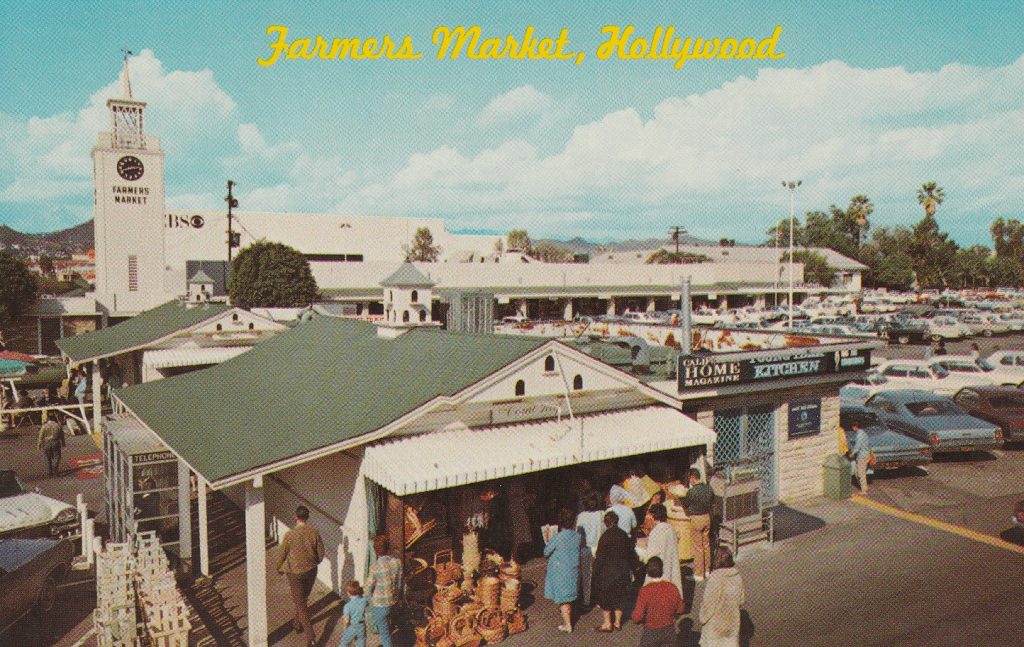
Hollywood’s famed Farmers Market is located at Fairfax Avenue and Third Street, next door to the CBS Television City. It opened in 1934 on the site of a former oil field and quickly became a favorite place for Los Angeles housewives to shop for produce. In 1948, the market’s iconic clock tower was erected. When Television City opened in 1952, the market’s stalls and restaurants became a popular lunch destination for the center’s personnel. This 1960s postcard shows shoppers at one of the market’s stalls.
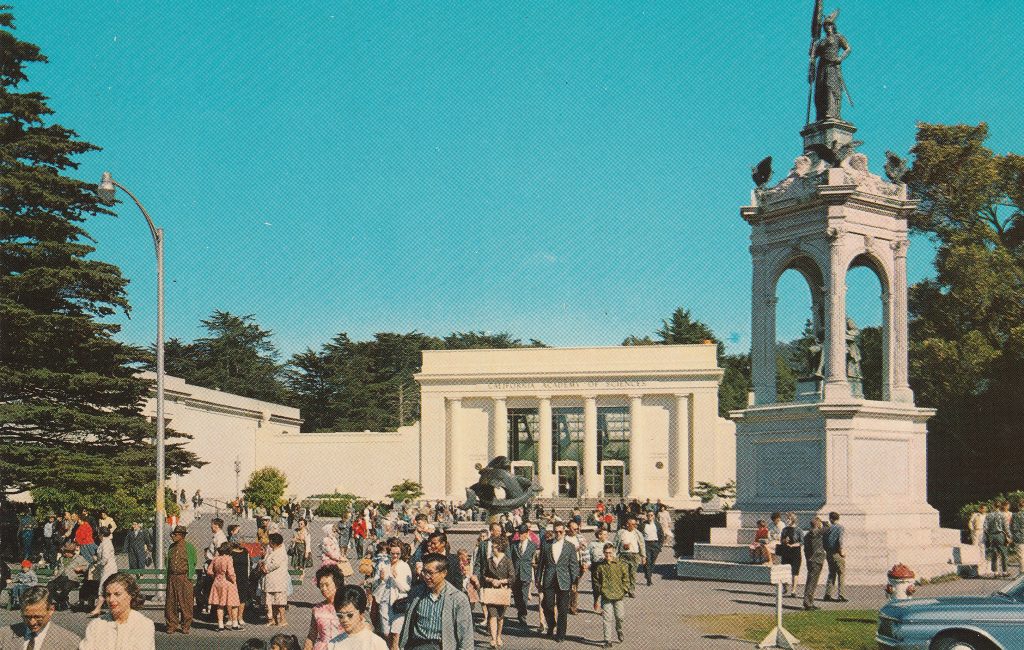
Visitors to the California Academy of Sciences in San Francisco’s Golden Gate Park were captured on a busy weekend. First organized in 1853, the Academy is one of the largest natural history museums in the world and attracts millions of visitors a year. It houses almost 40 million specimens for use by researchers. The Academy’s buildings were extensively damaged in the October 1989 Loma Prieta earthquake. A new building, which opened in 2008, was determined to be the best option to protect the Academy from future seismic events.
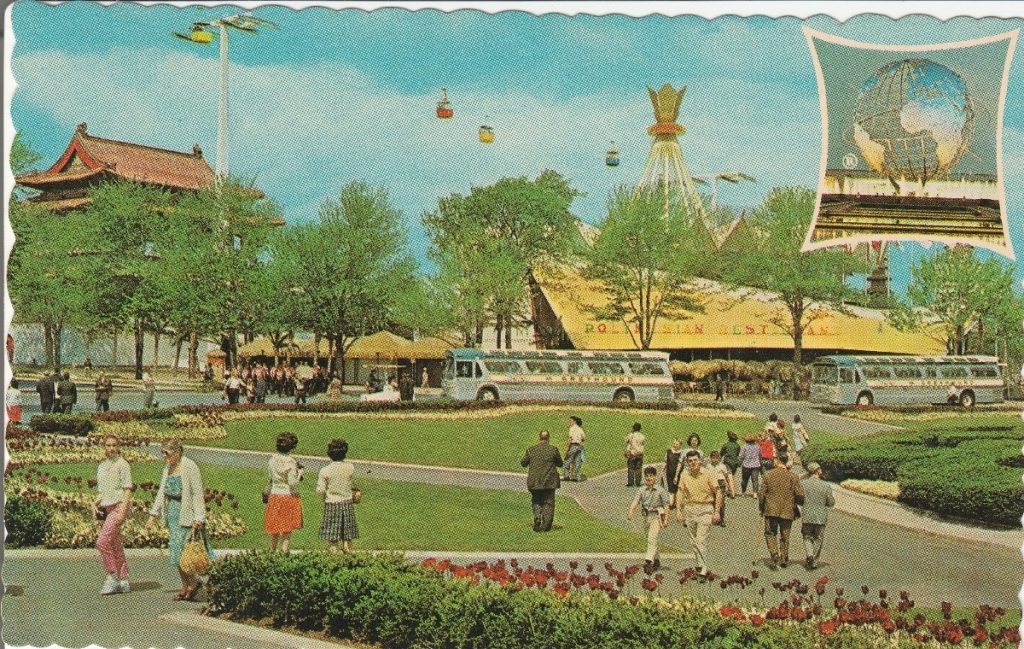
The 1964-1965 New York World’s Fair was a highlight of my childhood. My family journeyed from Texas to spend a week touring the fair in June 1964. Postcards with the insert of the Unisphere, the fair’s symbol, at the upper right were “official” World’s Fair postcards licensed for sale on the fairgrounds. This postcard captures fairgoers strolling through the Court of the U.S. Presidents with cable cars, the Taiwan Pavilion, and the Polynesian Restaurant in the background. The woman in the pink slacks at the bottom left has turned her head toward the photographer while her companion trudges up the path. The gentleman in the yellow shirt at the right appears to realize that he’d just been photographed.
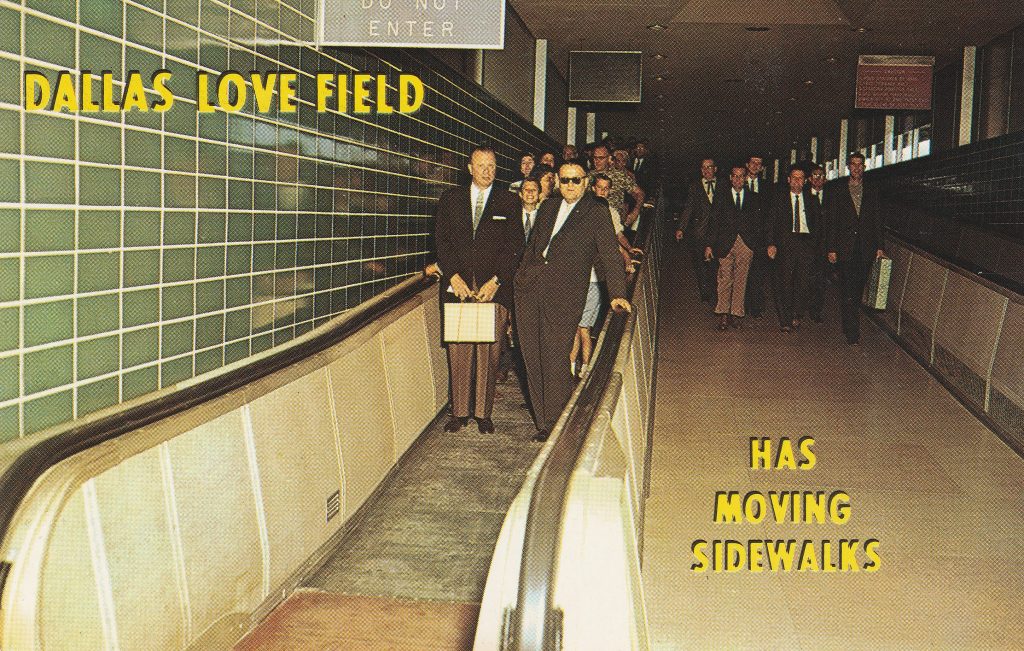
This early 1960s postcard shows the “moving sidewalks” at Dallas’s Love Field and the businessman travelers using them. (Our British cousins call them travelators and they are also known as people-movers.) Moving walkways are primarily installed in railroad and subway stations and in airports. The Vatican Pavilion at the 1964-1965 New York World’s Fair utilized tiered moving walkways to carry spectators past the Pieta.
The first commercial moving walkway in the United States was installed at the Hudson & Manhattan Railroad Erie Station in Jersey City, New Jersey in 1954. In 1958 Love Field became the first U.S. airport to install a moving walkway.
Love Field was supplanted as Dallas’s main airport when Dallas-Fort Worth International Airport opened in 1974. Today, Southwest Airlines, serves over a million passengers each year at Love Field.

A photographer caught a young man and woman crossing East Lincolnway, the main street in Valparaiso, Indiana, on a sunny day in the early 1960s. Located in northern Indiana, it is home of Valparaiso University located on the edge of downtown. It’s fun to speculate where the two are headed, maybe to the Farmer’s State Bank, the Woolworth’s, or the Rexall Drug Store.
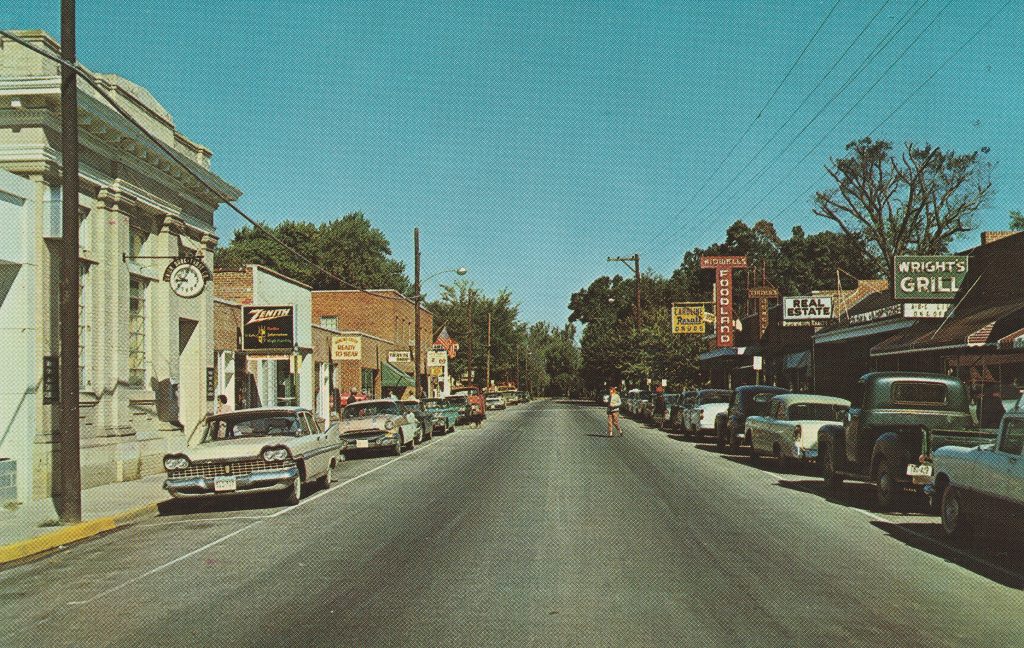
Based on the cars parked along North Main Street, this postcard of downtown Bowling Green, Virginia, is from the late 1950s. I wonder if the woman coming out of the grocery store realized thar her shopping excursion would be immortalized on a postcard?
Bowling Green’s downtown is located along Virginia State Route 2, one of the two early highways connecting Richmond and Fredericksburg. Later U.S. Route 301 was built through the area, connecting Richmond with Baltimore, Maryland, allowing north-south traffic along the east coast to bypass Washington, D.C. Today Route 301 is located to the east of downtown Bowling Green although the buildings seen on the card still house many businesses.
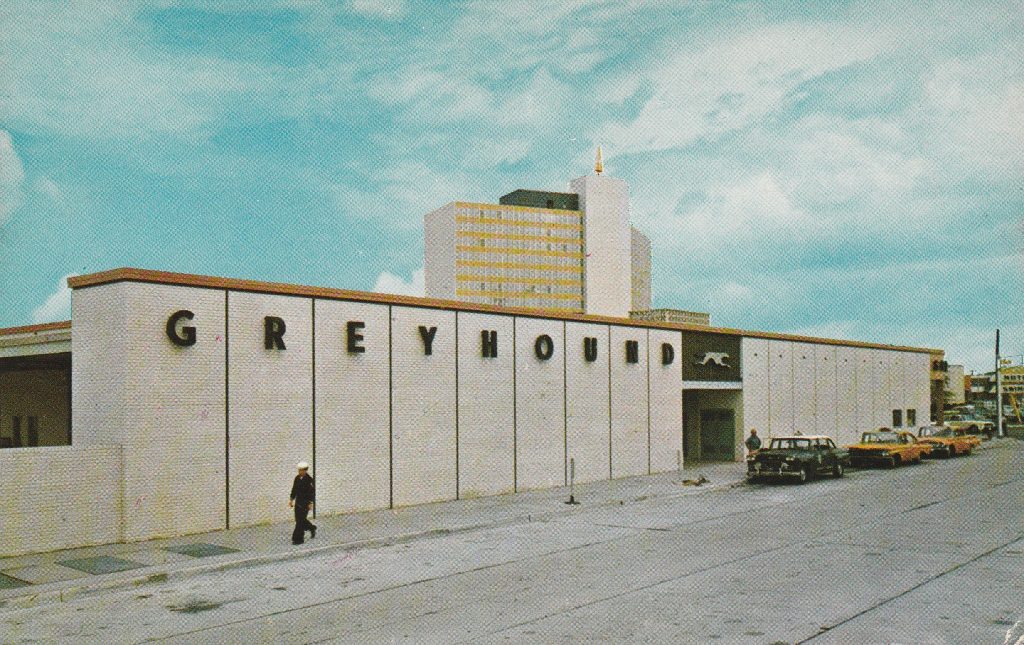
This early 1960s postcard captures a lone sailor in his dress blues strolling past the Greyhound bus station in Norfolk, Virginia. A cab driver stands at the entrance waiting for a fare. Although both men are in the photographer’s shot, it is as if a thousand miles separate them.
Towering above the bus station is the Golden Triangle Hotel, then Norfolk’s premier hostelry. Now shuttered, the bus station awaits redevelopment. Today the Golden Triangle flies the flag of the Wyndham Hotel chain.

The Norfolk Naval Base is the largest in the world and home to the U.S. Atlantic Fleet. Three young sailors stand at the edge of Pier 7, likely shooting the breeze on a summer day in the early 1960s. The three of them would be over 80 years old today and may be regaling a grandchild with a sea story.
The young sailors are standing in front of the USS Northampton. The Northampton had been laid down in August 1944 as an Oregon City Class heavy cruiser at the Fore River Shipyard in Quincy, Massachusetts. Construction was suspended in August 1945, but the Navy resumed construction in 1948 and the Northampton was launched in 1953 as a light cruiser command ship. She was designed to serve as a floating White House for the president in case of a nuclear war.
An unidentified Essex Class carrier is on the other side of Pier 7. During World War II, the Navy built twenty-four Essex class carriers, twenty-two of which served for many years after the war’s end. Thirteen saw service during the Viet Nam War.

High Street has been the main thoroughfare in Portsmouth, Virginia since the colonial era. Playing at the Gates Theater was the comedy/romance Anything Can Happen released in February 1953. It starred Jose Ferrer, Kim Hunter, and Kurt Kaznar. The women in summer dresses and the sailor in his white dress uniform crossing the street help date the picture to the summer of that year. The building housing the Gates Theater burned down later in the decade.
Love it, wondering about people in postcards is exactly what I do, where were they going, what became of them in life and where are they now.
Thank you. You have inspired me to look at the chromes in my collection with a new eye. Great article.
When I was in college, I started and ended many trips back home to Ohio at the Norfolk Greyhound terminal, and took a few cabs back to campus from that station.
Did you go to ODU?
Great article and cards. While I enjoy different types of postcards like Linens and RP’s, being that I grew up in the 60’s and 70’s I have a special affinity for Chrome Postcards. These were the first type of cards that I experienced.